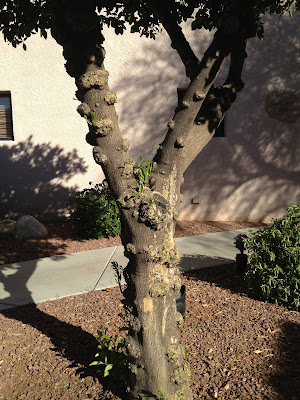 |
| Tree trunk infection by Agrobacterium tumefaciens. Resultant gall nearly 2 feet across. (Photo N. Goldberg NMSU - PDC) |
 |
| Crown gall infection at the graft union on rose. (Photo N. Goldberg NMSU-PDC) |
 |
| Root flare infection by crown gall. (Photo: N. Goldberg NMSU-PDC) |
 |
| Severe crown gall infection on the trunk and branches of a lime tree. (Photo: N. Goldberg NMSU -PDC) |
 |
| Large galls on peach tree roots caused by Agrobacterium tumefaciens (Photo: J. FrenchNMSU - PDC) |

No comments:
Post a Comment